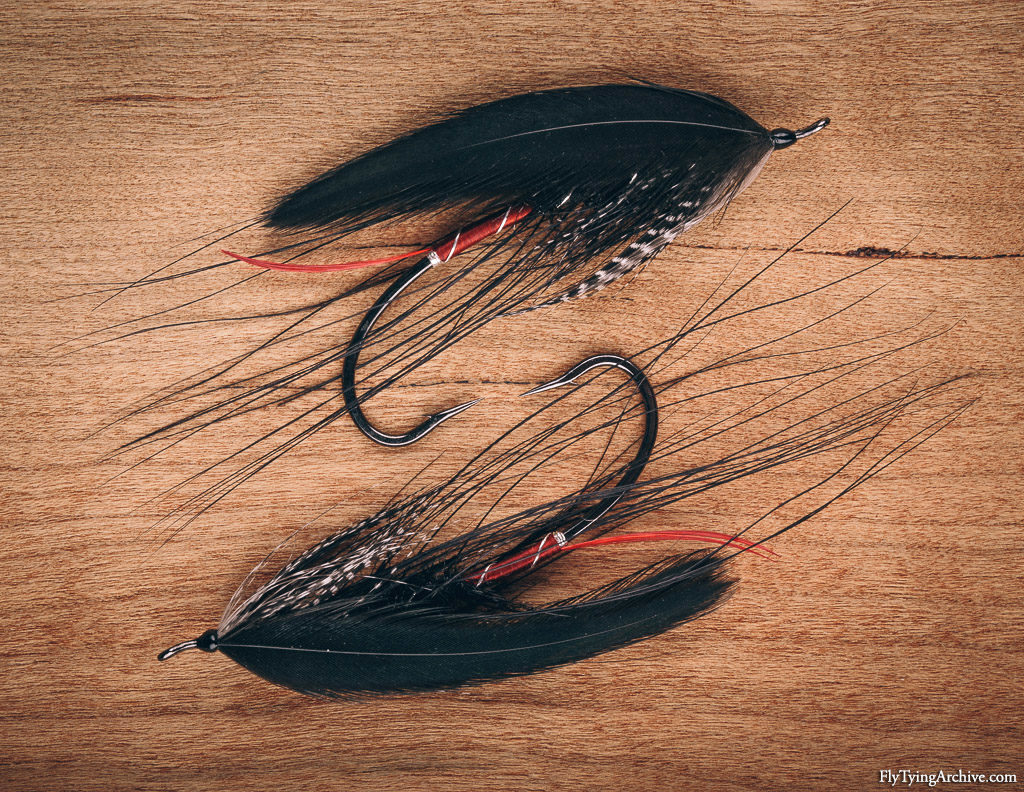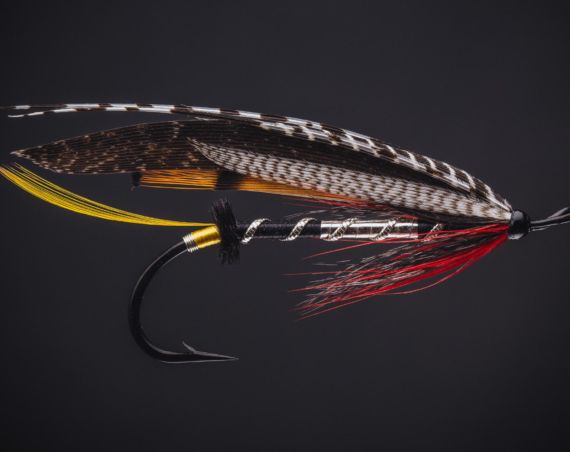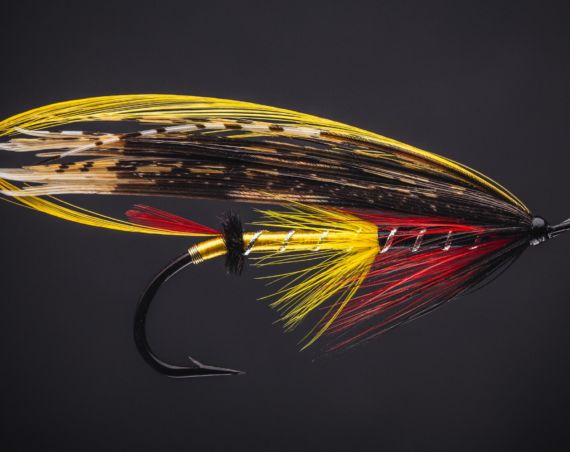Black Gordon Spey
I found this pattern from Bob Veverka’s book Spey Flies: How to Tie Them. There’s a plate of Steelhead Speys by Oregon tier Brad Burden and it’s one of my favorite plates in the whole book.
I used hen hackle for the wings as opposed to rooster. They have a more opaque and dense structure and due to their shape have not been usable on this sort of application before. But these modern hen capes, like the Whiting Hebert Miner I used, have longer feathers on the neck which suit perfectly in shape for wings. Again tied them heavily to the side to have a roofing structure on the wing that will lift the hook better and move nicely. The body hackle is a bit longer than in the original and a bit too long for my taste too, closer to the bend of the hook would be perfect.
Here’s the pattern as in Veverka’s book and the description from Bob.
Tag: Fine oval silver tinsel.
Tail: Dyed red golden pheasant crest.
Body: Rear half, red floss; front half, black angora goat.
Rib: Fine oval silver tinsel.
Body hackle: Long black spey hackle.
Throat: Teal flank.
Wing: Two pairs of matched black hackle tips.
“The Black Gordon Spey is one of Brad Burden’s variations of the North Umpqua’s classic steelhead fly, the Black Gordon. Brad finds that it is very effective with lots of movement and good strong steelhead colors.
It belongs to a series of classic patterns that were converted to Spey flies. The original Black Gordon steelhead pattern was created by Clarence Gordon in the late 1930s for use on the North Umpqua River. He was well-known, fin fly tier and fly fisherman.”




